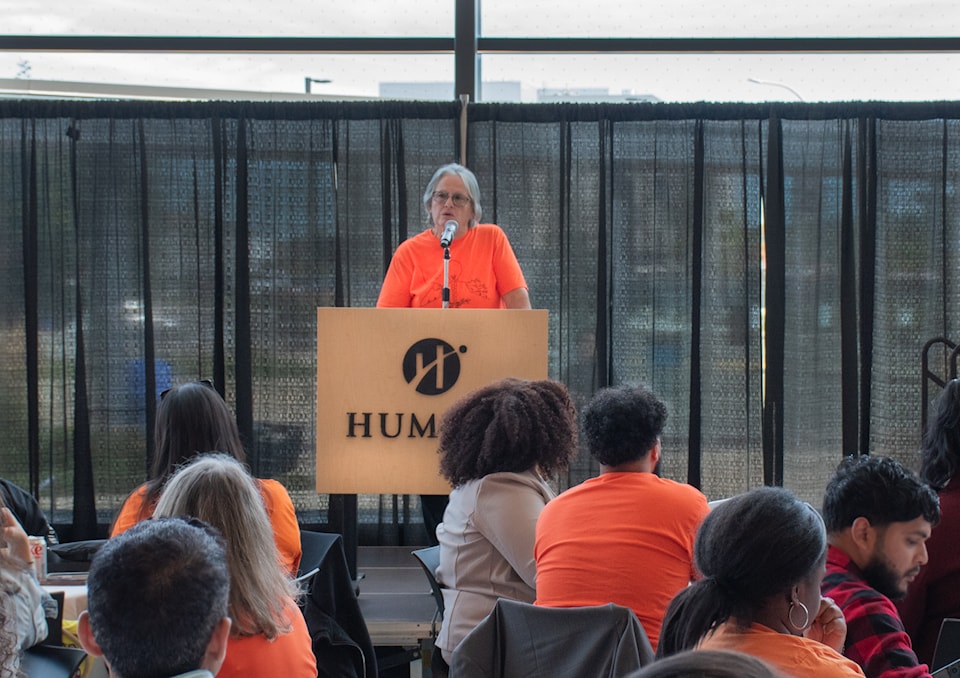Roberta Hill remembers all too well the pain and horror of her years in an Ontario residential school.
"These institutions were places of cruelty," Hill said. "They split up our families, caused trauma, and many of us carried that with us for years."
Hill is a survivor of the Mohawk Institute Residential School in Brantford, Ont., and she and others shared their experiences of the cruelty and trauma faced by children in residential schools with about 100 people during the Humber Polytechnic’s North campus in support of Truth and Reconciliation on Thursday evening.
She said it’s important to listen to survivors’ stories to foster a deeper understanding of the lasting impact of residential schools on Indigenous communities.
"We must walk together," Hill said. "Don’t be afraid to ask questions."
They walked together from the Barrett Centre for Technology Innovation to the Humber Arboretum in recognition of the National Day for Truth and Reconciliation, observed every Sept. 30 to honour the victims and survivors of Canada’s residential school system, and in tribute to the languages, history and cultures of Indigenous Peoples and Métis and Inuit peoples.
IGNITE student advocate Naisha Suthaharan said the annual walk provided a critical opportunity for reflection and learning.
“The Walk for Reconciliation is a moment to reflect, to acknowledge the land and what happened, and to continue reconciling with the Indigenous community,” Suthaharan said. “It’s important to educate ourselves and to be united with the community when we do this.”
IGNITE hosted the Humber walk in partnership with Indigenous Education and Engagement and the Office of Equity, Diversity, Inclusion and Belonging.
The Humber community wore orange shirts in a show of solidarity during the walk. The colour has become symbolic of the children whose culture, freedom and self-esteem were stripped away in residential schools. The remains of about 2,000 Indigenous children on the grounds of former residential schools and many more remain missing.
The walk also underscored Humber’s commitment to supporting Indigenous students and communities.
The event highlighted Humber’s bursaries for Indigenous students, which provide financial aid to those facing challenges in their education.
Suthaharan said the bursaries, supported by external donations, are crucial in helping Indigenous students succeed.
“This event underscores that we stand in support of Indigenous students,” she said.
Sarah Rumsey, manager of Planning and Strategic Initiatives at the University of Guelph-Humber, said Humber has embedded reconciliation into its institutional framework.
She referenced the launch of Humber’s Equity, Diversity, Inclusion and Belonging Plan, which seeks to ensure that Indigenous education is incorporated across the campus.
Reflecting on the event, Suthaharan said she hopes participants left with a deeper understanding of the importance of reconciliation and the legacy of residential schools.
“I hope people took away knowledge from the stories we shared and reflected on the purpose behind the walk,” she said. “If everyone leaves with new knowledge, that’s already a phenomenal result.”


.png;w=120;h=80;mode=crop)
